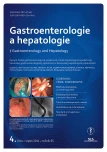Feasibility of a novel single loop-and-clip gastrotomy closure (‘King’s closure’) after NOTES procedures in an experimental study
Authors:
O. Ryska 1; J. Martínek 2; R. Doležel 3; T. Filipková 4; Š. Juhás 5; J. Juhásová 5; M. Zavoral 2; I. Tučková 6; M. Ryska 3
Authors‘ workplace:
Chirurgická klinika, FN Na Bulovce, Praha2Interní klinika, 1. LF UK a ÚVN Praha3Chirurgická klinika, 2. LF UK a ÚVN Praha4Chirurgické oddělení, Nemocnice Domažlice, a. s. 5Ústav živočišné fyziologie a genetiky AV ČR, Liběchov6Oddělení patologie, ÚVN Praha
1
Published in:
Gastroent Hepatol 2011; 65(4): 207-210
Category:
Clinical and Experimental Gastroenterology: Original Article
Overview
The NOTES (Natural Orifice Transluminal Endoscopic Surgery) technique has recently been the subject of many experimental and several clinical trials. A safe access site closure (e.g. gastrotomy) is essential for its widespread application. The aim of our experimental study was to evaluate the feasibility and safety of a novel single loop-and-clip (‘King’s closure’) gastrotomy closure technique. A single loop-and-clip closure was performed in 24 pigs after different transgastric procedures (peritoneoscopy, liver biopsy, ovariectomy, and cholecystectomy). A two-channel endoscope was used in all cases. Gastrotomy was performed using a needle knife followed by balloon dilatation. A single endoloop (30 mm) fixed around the gastrotomy with standard clips was used for a closure. Animals were euthanized after 30 days and autopsy was performed. The median closure time was 8 minutes and 4.5 clips were used on average. Small intra-abdominal abscesses were found in 8 (33%) animals and 15 (63%) animals had several avascular adhesions. A healed serosa-to-serosa gastrotomy closure was found in all animals confirmed by histological examination. The new single loop-and-clip gastrotomy closure (‘King’s closure’) is a fast, feasible and safe technique using standard accessories.
Key words:
NOTES – gastrotomy – loop-and-clip
Sources
1. Rattner D, Kalloo A; ASGE/SAGES Working Group. ASGE/SAGES Working Group on Natural Orifice Translumenal Endoscopic Surgery. Surg Endosc 2006; 20(2): 329–333.
2. Meining A, Feussner H, Swain P et al. Natural-orifice transluminal endoscopic surgery (NOTES) in Europe: summary of the working group reports of the Euro-NOTES meeting 2010. Endoscopy 2010; 43(2): 140–143.
3. Reddy DN, Rao GV. Transgastric approach to the peritoneal cavity: are we on the right track? Gastrointest Endosc 2007; 65(3): 501–502.
4. Arezzo A, Morino M. Endoscopic closure of gastric access in perspective NOTES: an update on techniques and technologies. Surg Endosc 2010; 24(2): 298–303.
5. Kalloo AN, Singh VK, Jagannath SB et al. Flexible transgastric peritoneoscopy: a novel approach to diagnostic and therapeutic interventions in the peritoneal cavity. Gastrointest Endosc 2004; 60(1): 114–117.
6. Schurr MO, Hartmann C, Ho CN et al. An over-the-scope clip (OTSC) system for closure of iatrogenic colon perforations: results of an experimental survival study in pigs. Endoscopy 2008; 40(7): 584–588.
7. Hookey LC, Khokhotva V, Bielawska B et al. The Queen‘s closure: a novel technique for closure of endoscopic gastrotomy for natural-orifice transluminal endoscopic surgery. Endoscopy 2009; 41(2): 149–153.
8. Hucl T, Benes M, Kocik M et al. A novel double-endoloop technique for natural orifice transluminal endoscopic surgery gastric access site closure. Gastrointest Endosc 2010; 71(4): 806–811.
9. Sumiyama K, Gostout CJ, Rajan E et al. Submucosal endoscopy with mucosal flap safety valve. Gastrointest Endosc 2007; 65(4): 688–694.
10. Pham BV, Raju GS, Ahmed I et al. Immediate endoscopic closure of colon perforation by using a prototype endoscopic suturing device: feasibility and outcome in a porcine model. Gastrointest Endosc 2006; 64(1): 113–119.
11. Voermans RP, Vergouwe F, Breedveld P et al. Comparison of endoscopic closure modalities for standardized colonic perforations in a porcine colon model. Endoscopy 2011; 43(3): 217–222.
12. Magno P, Giday SA, Dray X et al. A new stapler-based full-thickness transgastric access closure: results from an animal pilot trial. Endoscopy 2007; 39(10): 876–880.
13. Hookey LC, Bielawska B, Samis A et al. A reliable and safe gastrotomy closure technique assessed in a porcine survival model pilot study: success of the Queen‘s closure. Endoscopy 2009; 41(6): 493–497.
14. Lee SS, Oelschlager BK, Wright AS et al. Assessment of a simple, novel endoluminal method for gastrotomy closure in NOTES. Surg Endosc 2011 [Epub ahead of print].
Labels
Paediatric gastroenterology Gastroenterology and hepatology SurgeryArticle was published in
Gastroenterology and Hepatology

2011 Issue 4
Most read in this issue
- Standard of the Czech Society of Gastroenterology for capsule endoscopy of the small intestine
- Autoimmune pancreatitis in a patient with Crohn’s disease
- What to do when invasive colorectal carcinoma is found in endoscopic resection specimens?
- Single-balloon enteroscopy in patients with Crohn’s disease – single centre’s experience
